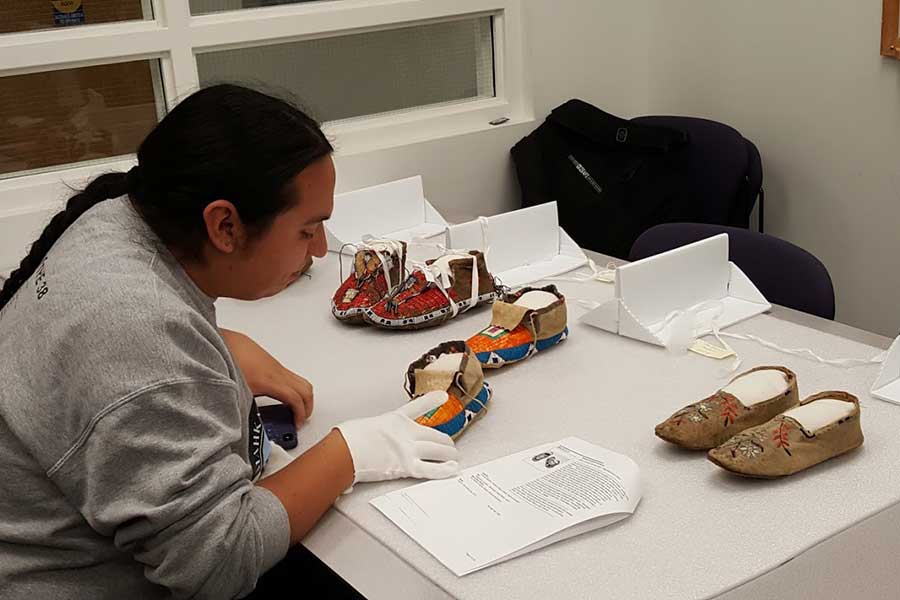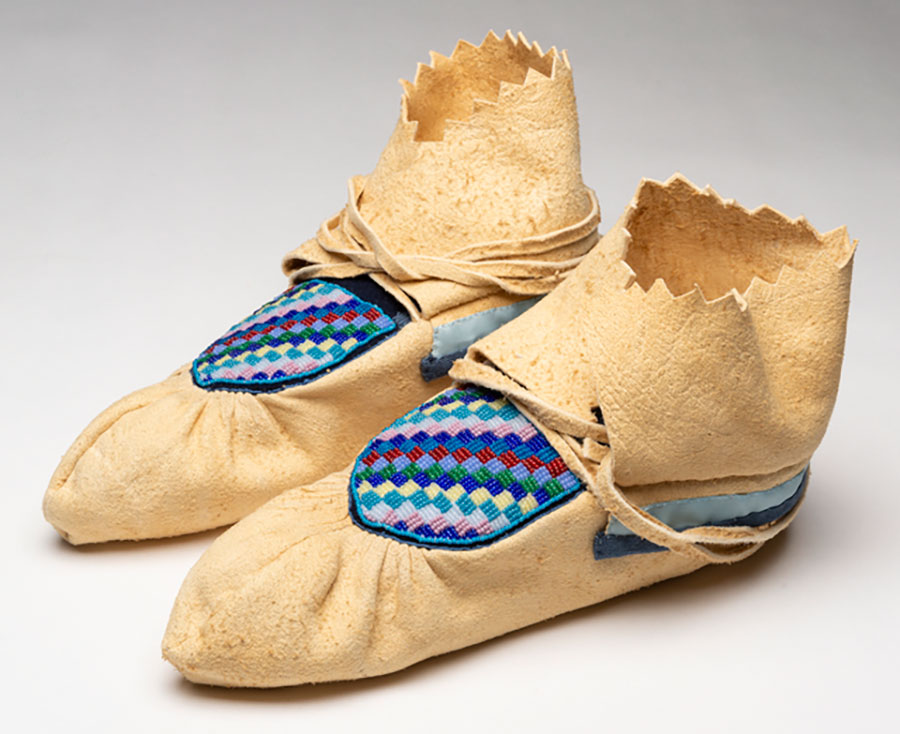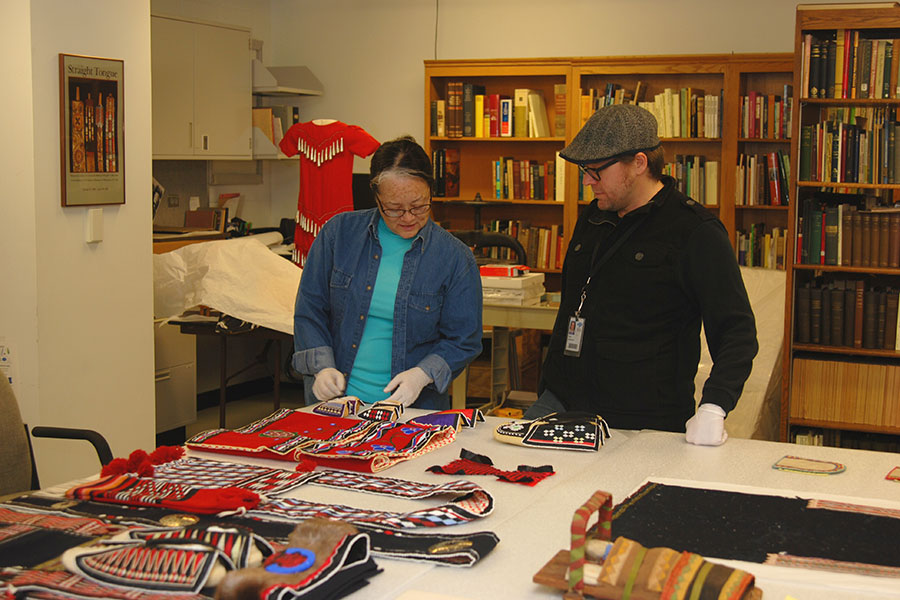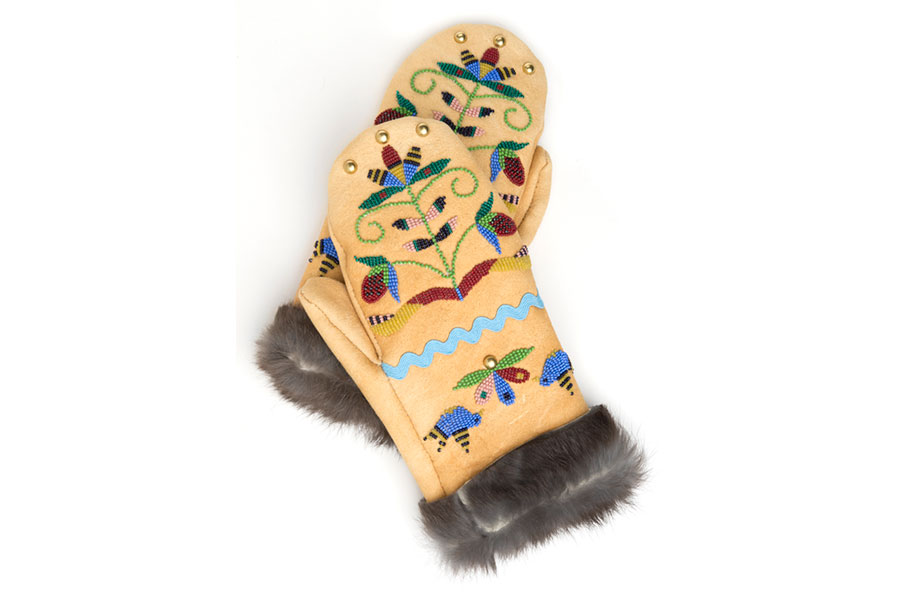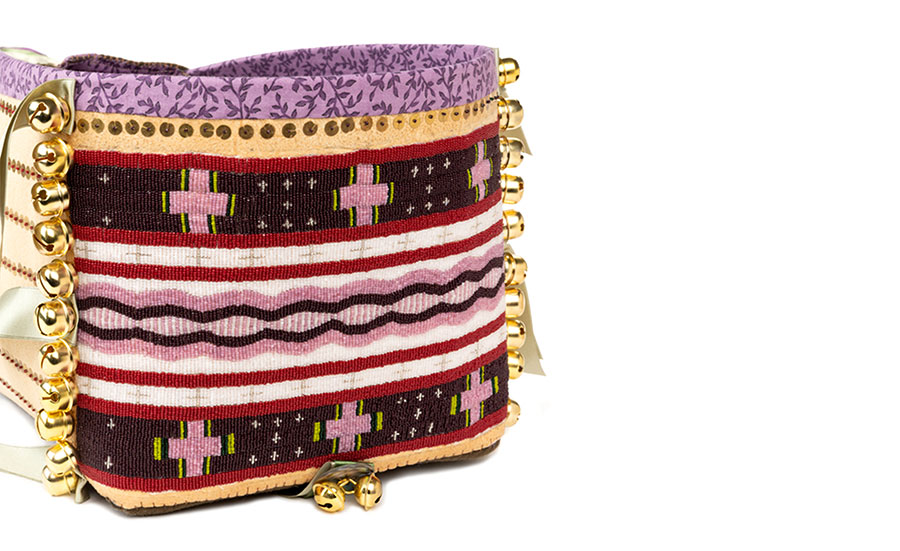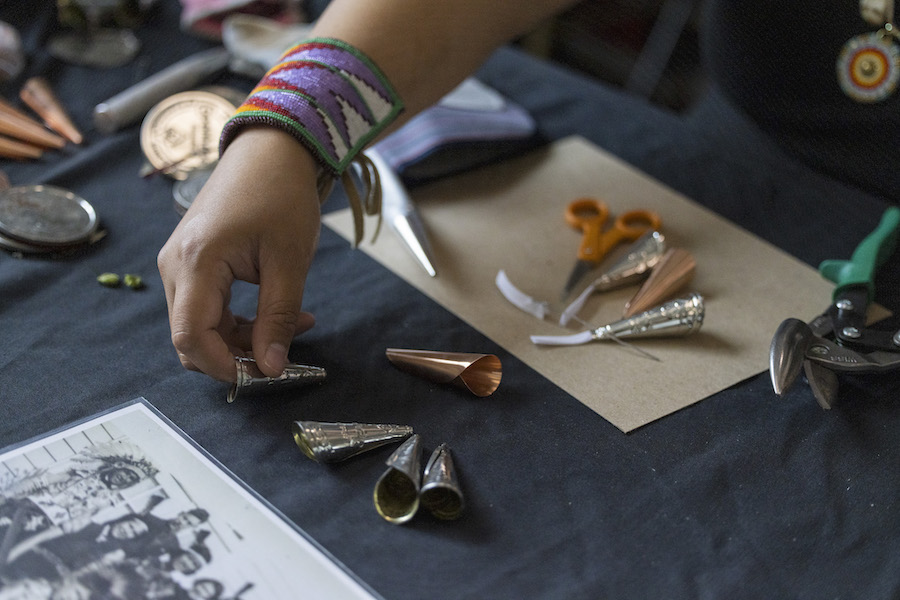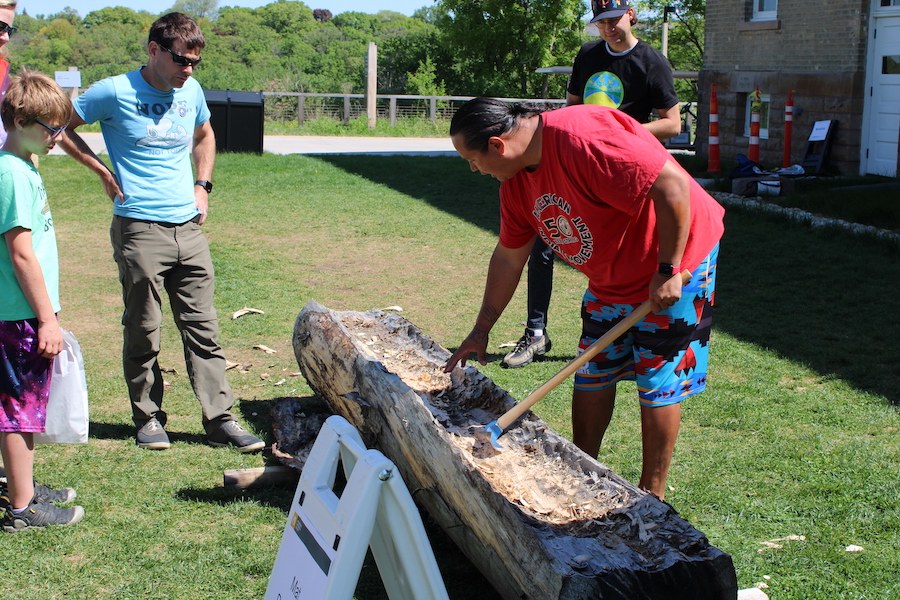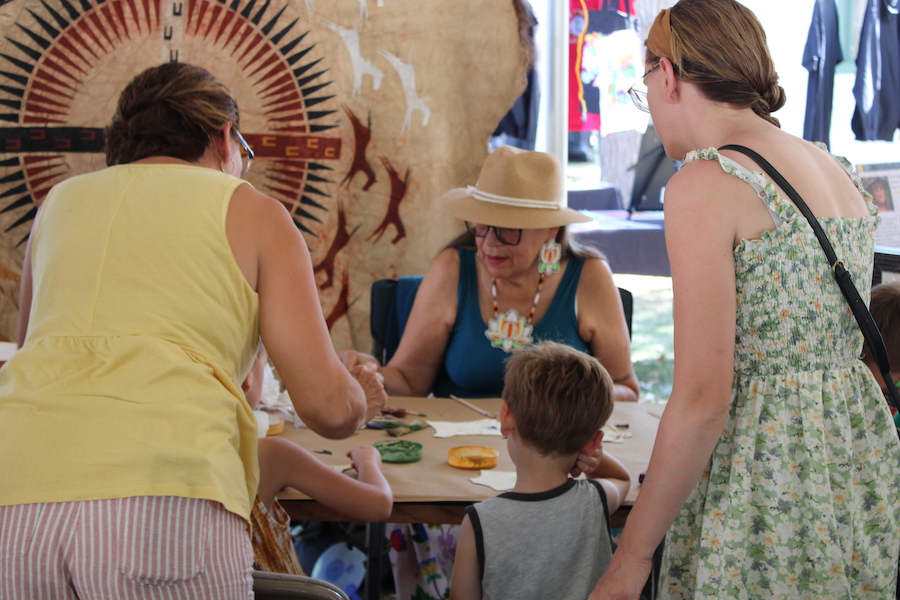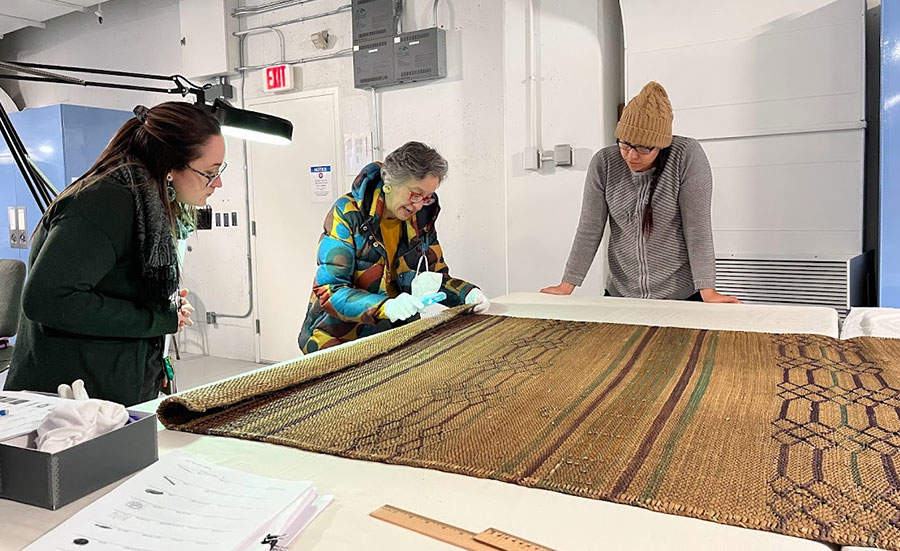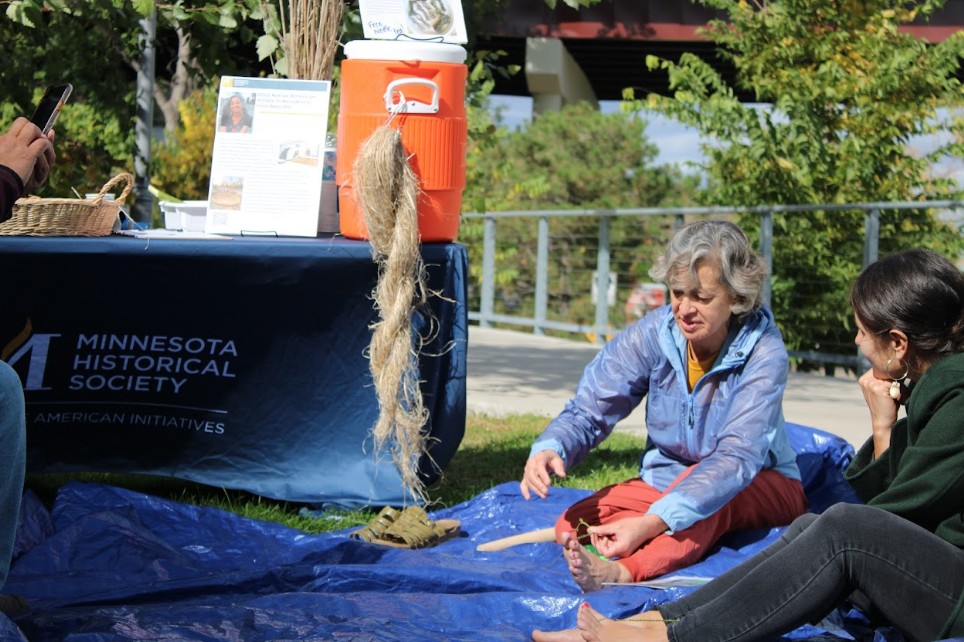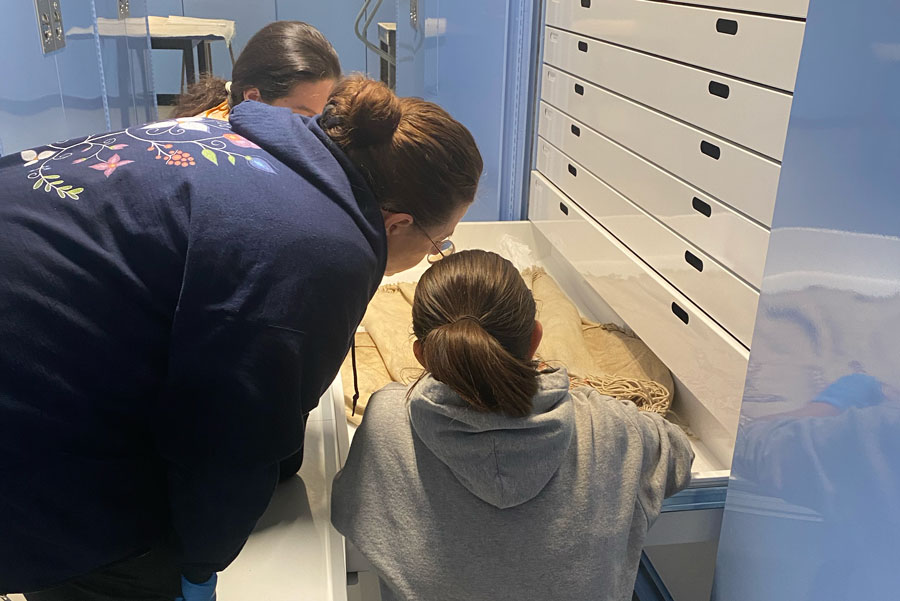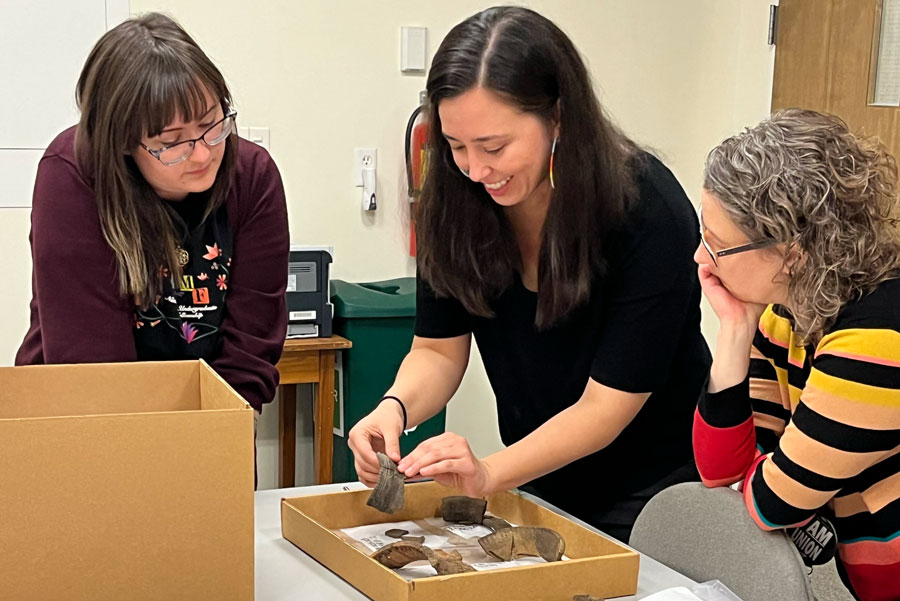Native American Artist-in-Residence Program
The Minnesota Historical Society (MNHS) serves as a steward for thousands of material culture items and photographs, as well as thousands of records related to Native American communities of the region.
Program overview
Artist-in-Residence
The Native American Artist-in-Residence (NAAIR) Program was established in 2013 to support the continuation and recovery of traditional Native American arts by utilizing the Minnesota Historical Society’s collections. NAAIR is a six to twelve month residency. Artists are supported financially, gain open access to study the MNHS collections, and are provided with support to visit regional museums or knowledgeable peer artists or elders. The purpose of this residency is to expose Native American artists who currently work within traditional art forms to these resources, in order to:
1) Advance their understanding of their respected forms of art.
2) Bring this advanced awareness and understanding to their home communities in a way designed by the artist.
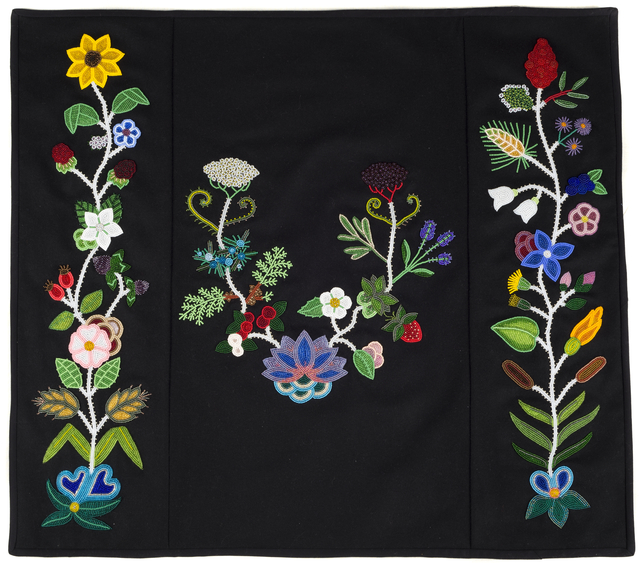
This program highlights the knowledge and experience resident artists bring with them as they research the collection. Artists help inform MNHS collections and future researchers by adding their knowledge of the craft to the descriptions and information provided for each object they visit with. MNHS staff will also benefit tremendously from knowledge shared by the artists regarding what they have learned about the construction, style, design, and uses of cultural items.
The core focus areas of this residency are collections research, community outreach, and transference of intergenerational knowledge. The NAAIR program is open to artists practicing all forms of cultural art, including utilitarian forms such as bow-making and canoe-making. Special consideration will be given to regional traditional media that is seen as endangered within the artist’s community, such as pottery or birch bark biting.
Participating artists will be responsible for their own equipment, materials, banking options to receive payments, and travel and lodging while in the Twin Cities. A travel budget for research visits is allotted for each artist. Additionally, the program has an acquisitions budget devoted to purchasing at least one piece of work from each artist-in-residence.
Application process
NOTE: The following materials must be submitted on or before the final application deadline - October 24, 2025:
- Resume or Curriculum Vitae
- Artist Biography
- Letter of Support
- Portfolio (5 to 10 examples of work)
- Research Proposal
- Community Project Proposal
Resume or Curriculum Vitae
A resume is a concise document created to present an individual's background, employment history, skills, and accomplishments. A curriculum vitae is a document that presents a full history of one's academic credentials. Artists are required to provide at least one of these documents to be considered for the residency.
Artist Biography
Introduce yourself and provide your background as an artist.
Letter of Support
This program does not require tribal enrollment for participation, however we do ask that a letter of support be written by a member of the community the applicant identifies with. These letters should address the applicant's art and involvement within the community; it should also include the supporting individual’s contact information.
Portfolio
Please attach 5-10 current pieces (created within the last 5 years) with a corresponding numbered image list with media, date, and dimensions.
Program Outcomes
The NAAIR award consists of the following:
- $30,000 grants to be paid in 3 installments, the last installment paid after completion of the program. (Applicants should understand that this is taxable income.)
- Travel stipend - up to $4,000 to visit and research other cultural knowledge bearers and institutions.
- Access to MNHS collections and a network of regional institutions for individual research.
- Funding and support for programming such as materials, food, etc.
- Up to $7,500 to purchase artwork that will be added to the MNHS collection.
Additional Artist Outcomes:
- Receive support from MNHS staff and interns in regards to collections study, program development, and logistical support regarding travel.
- Receive support from MNHS staff and consultants to evaluate the outputs and outcomes of the community programs, using culturally appropriate evaluation methods.
- Receive training in both museum collection and archival collection research, including how to access historic manuscript, photograph, and library collections through the MNHS research library.
- Spend the majority of residency devoted to artistic study of the MNHS collections, but also receive a travel stipend to be used for visits to other local, regional, and national museums, including the Mille Lacs Indian Museum, the Science Museum of Minnesota, and the National Museum of the American Indian, if desired. The travel stipend may also be used for visits with knowledgeable elders or artists practicing the art form and/or for bringing these knowledgeable elders/artists to view the MNHS collections for joint study.
- Develop a community-based project inspired by this research, in order to share new knowledge of the art form in the artist’s home community. Special consideration will be given to projects incorporating a deep transfer of cultural knowledge, such as building curricula and organizing community-based youth classes, or the development of a relationship with an apprentice artist. This project is to be completed within 3 months of the end of the residency.
- Participate in and assist in evaluating three public programs, thereby exposing the MNHS (generally non-Native) museum audience to traditional Native American art forms. Programs will be designed by the artist with assistance from MNHS staff and may include demonstrations of the art form, gallery talks, or public lectures.
MNHS Expectations For Artists in Residence:
- Check in with the Program Specialist by phone or in person on a biweekly basis. This includes providing an email address and telephone number that is checked regularly and responding to all communications within a reasonable time.
- Work with MNHS media specialists to create one video interview documenting their experiences during the residency.
- Make available at least one work of art for purchase by the MNHS permanent collection (additional funds designated for this purchase).
- Successfully pass a security background check.
- Agree to abide by MNHS’ Statement of Native American Graves Protection and Repatriation Act (NAGPRA) and Culturally Sensitive Objects Policy and be aware that any culturally sensitive objects requested to be accessed during residency will require special procedures and permissions.
All NAAIR applicants will be invited to attend an annual full-day artist gathering to discuss application strategies and to visit briefly with MNHS collections. This program also offers an encouragement award to outstanding applicants.
The Native American Artist-in-Residence review panel selects two awardees for the Encouragement Grant. The Encouragement Grant is to help support the artistic endeavors of applicants not selected for the residency. The encouragement award includes:
- $2,500 grant
- $500 travel stipend
- One tailored visit to review MNHS collections
NAAIR is open to Native American artists residing in Minnesota, Wisconsin, North Dakota, and South Dakota who are currently permitted to work within the United States. Enrollment in a federally recognized tribe is not a requirement, but the artist must be recognized by their community and demonstrate significant artistic knowledge.
This program relies on usage of the Minnesota Historical Society Collections as well as a regional network for museums for research. It is helpful to familiarize yourself with the collections online to develop an understanding of what our collections house. Learn more by visiting Collections Online.
The research proposal should be 600 words minimum and should describe why collections research is important to you and your art form as well as the impact it could have on your community. Do you consider your art form or area of research to be endangered or lost in your community? Is there a specific design or construction form you are interested in? Outline the cultural areas, art forms and specific time periods, if any, of your research interest.
Describe the nature of your research and how you plan to conduct it. Do you see yourself focusing primarily on object collections research? Will you utilize historic photographs, books, manuscripts, or oral histories in your research? Is there a research collection at another local, regional, or national institution that you wish to access? As part of your research, will you seek out other experts in the art form and/or elders who may have additional knowledge about the art form?
Community impact is important to this program and its measurements of success. Describe how you will reach members of your community to share what you’ve learned through your research. (Will you hold a community workshop? Become a mentor or take on an apprentice, or conversely, become an apprentice?)
Explain the need for this project. How will sharing your research enhance the cultural values of your community? Specifically identify the individual, group, or groups you will reach with your community outreach project, as well as any collaborators (nonprofits or tribal departments). Describe what the potential collaborators are willing to contribute to your project (venue, staff time, etc.).
The community-based project will be inspired by collections research of the artist in order to disseminate new knowledge of the art form in the artist’s community. Special consideration will be given to projects incorporating deep transfer of cultural knowledge, such as building curricula and organizing community-based youth classes, or the development of a relationship with an apprentice artist. This project is to be completed within three months of the end of the residency.
The Native American Artist-in-Residence program is open to Native American, Alaska Natives, and Native Hawaiiain artists currently residing in Minnesota, Wisconsin, North Dakota, and South Dakota who are currently permitted to work within the United States. Enrollment in a federally recognized tribe is not a requirement, but the artist must be recognized by his or her community and demonstrate significant artistic knowledge.
Applicants will be evaluated on both the quality of their work and the strength and feasibility of their research and project proposals. An advisory panel consisting of culturally knowledgeable community member experts will review completed applications and make recommendations to program staff. Program staff will make final selections and notify selected applicants of acceptance to the program.
Questions-- including those about MNHS collections and library resources -- are encouraged and should be sent to Chloe Cashman, Program Specialist for NAAIR at chloe.cashman@mnhs.org.
TO APPLY: Application materials must be complete and received by the application deadline date in order to be considered. Submit materials online by October 24, 2025 to:
Can I apply if I don’t live in Saint Paul or near the History Center?
Yes, this residency can cover any residence in Minnesota, Wisconsin, North Dakota, and South Dakota. There is funding to supplement artist travel to and from the Minnesota History Center.
Do I need to be an enrolled member of a Tribal Nation?
No, but you need to have strong ties to a tribal community.
How often can I visit the collection at MNHS?
Artists typically visit the collection three or more times during their residency. This would depend on staff availability.
Can I travel outside the US for research purposes?
In the past, artists have not gone to other countries. We do not have network contacts for museums outside of the country but would be willing to discuss this on a case by case basis.
Can past NAAIR Artists help with the application process?
Yes, they can write your letter of support and mentor you through the process.
Is beadwork considered traditional?
Yes, although glass beads were not originally used pre-contact, beadwork and design are considered traditional art forms. However, it would be beneficial to be specific when discussing your research proposal.
What is the time-line of the residency?
The residency is meant to be 6-12 months.
Can I reapply if I have in the past but did not receive the award?
Yes, if you would like to discuss your past application, please contact NAAIR staff.
MNHS is working to make changes to our NAGPRA (Native American Graves, Protection and Repatriation Act) and Culturally Sensitive Objects Policy to reflect the current NAGPRA regulation updates. If you have any questions regarding the NAGPRA process at the Minnesota Historical Society, please reach out to nagpra@mnhs.org.
Chloe Cashman, Program Specialist, Native American Initiatives
chloe.cashman@mnhs.org
Rita Walaszek Arndt, Collections Outreach Manager, Native American Initiatives
rita.walaszekarndt@mnhs.org
